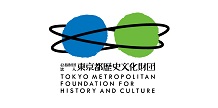Tanaz Modabber & Pierre Mourles "Harmony for Vanishing Points"
- TOP >
- Archives >
- Exhibitions / Performances >
- Tanaz Modabber & Pierre Mourles "Harmony for Vanishing Points"
Tanaz Modabber & Pierre Mourles "Harmony for Vanishing Points"
TOKYO EXPERIMENTAL FESTIVAL Vol.9 ―Performance [Recommended Program]

Information
| Title | Tanaz Modabber & Pierre Mourles "Harmony for Vanishing Points"
TOKYO EXPERIMENTAL FESTIVAL Vol.9 ―Performance [Recommended Program] |
|---|---|
| Date | 2014.11.7(Fri) - 2014.11.8(Sat) |
| Admission | 1200 yen |
| Organize | Tokyo Metropolitan Foundation for History and Culture, Tokyo Wonder Site |
| Venue | Ryogoku Monten Hall |
| Artist | Tanaz Modabber / Pierre Murles |
In the performance "Harmony for Vanishing Points" a dematerialization process begins with the translation of a horizontally meandering charcoal drawing into sound. Used as iconic references, Pierre Mourles and Tanaz Modabber amplify and modify their instruments, setar and accordion, with the computer's transformative systems. They explore complex combinations of harmonies without any clear sense of traditional tonal relations. In an octaphonic system both acoustic instruments and electronic tools are able to create compression and expansion of space. The development of the composition is supported by dynamics, textures, harmony and arrhythmia of patterns viewed in the charcoal drawing.
[new!!] Click here for Interview with Tanaz Modabber
[new!!] Click here for the video (short ver.) of "Harmony for Vanishing Points" at TEF Vol.8 (2013).
チケット情報
Date: November 7 (Fri), 8 (Sat)Finshed
Start: 19:00 (Doors Open: 18:30) *November 7 (Fri)
15:00 (Doors Open: 14:30) *November 8 (Sat)
*Duration 40 mins
Ticket: 1200 yen
*There is post-performance talk on November 7 (Fri)
Please note that Motoharu Kawashima (composer)'s participation in the talk has been cancelled.
Booking
1. Booking should be made by E-mail or Fax.
E-mail: ticket@tokyo-ws.org / Fax: 03-5602-9882
2. Please inform us of your name, phone number, date/time/name of the performance and number of tickets with a subject of "Booking for TEF Performance".
3. Payment should be made at the venue on the day of performance.
4. Booking will be closed by 17:00 of the day before each performance, or as soon as the seats are fully booked. For the latest ticket information, please check this page.
*Please note that program content may change due to inevitable reasons.
Profile
Tanaz Modabber
/ Born in Tehran, Iran. She graduated from University of California, Berkeley (Landscape Architecture and Art), and completed her Master's degree in Architecture. She creates site-specific installations and intimate studio architectural works. Her training both in Western and Persian classical music has influenced her approach to spatio-temporal domain of reality and the "non physical" space explored in her projects.
Pierre Mourles
/ French musician/composer. He studied electronic music at Conservatoire de Pantin and jazz at Arpej Jazz School. He was awarded the Sacem prize for his DEM degree in electroacoustic music. Taking the form of acoustic concert, sound installation, and sound-design for movies and dance show, his musical practice reflects his concerns over how composition of sounds navigates between narration and abstraction, between raw sensation and expansive metaphor.
Interview
Tanaz Modabber (from Tanaz Modabber & Pierre Mourles)
Special Prize winner of TEF Vol.8 (2013). Their performance "Harmony for the Vanishing Points" is back to TEF Vol.9 as Recommended Program.
--You two usually work separately, and live different cities. What kind of difference does it make to work together from working alone?
 We don't see the physical distance as a limitation or any sort of constraints. It requires good communication, but now we have internet. From time to time we get together either in Paris or Berlin. We take on different parts of the project, and develop it separately. When we get together, we merge the separate works and make it one body. So it's a kind of weaving. We weave our knowledge together and see how we can make the work coherent. We actually enjoy this challenge of working separately and then coming together as if we had never been apart. It seems like one type of work.
We don't see the physical distance as a limitation or any sort of constraints. It requires good communication, but now we have internet. From time to time we get together either in Paris or Berlin. We take on different parts of the project, and develop it separately. When we get together, we merge the separate works and make it one body. So it's a kind of weaving. We weave our knowledge together and see how we can make the work coherent. We actually enjoy this challenge of working separately and then coming together as if we had never been apart. It seems like one type of work.
--In "Harmony for Vanishing Points", de-materialization is a key word. Could you explain this concept?
It's a process of translation, an idea, a medium, or an object re-defined and it's expressed in another form. So it starts to adopt a new form of existence. In this process, it's also about changing the dimensions, the scale, and the senses to reach new state. Basically, we use mapping as a method for translation, beginning with three-dimensional objects which I call "architecture", the kinetic building models. So that is the beginning of the process which movement of the models is mapped. We transcribe it into linear drawing of 20 meters. Then drawing becomes an open score for the sound piece. Next step is to map out again this drawing. We read patterns, shapes, lines, points, and nuances from this drawing and transcribe it into sound. So this is what we define as "de-materialization".
Another meaning of "de-materialization" is in relation to our roots. We are using our traditional instruments (accordion for France, setar for Iran) as iconic medium to produce sound. We keep the energy of this instrument but we dematerialize the use, the traditional practice of it.
--So there is an architectural structure before the drawing we see on the screen.

-Is there any rule or system when you translate the drawing into music?
We create codes. We find patterns existing in the drawing, and then we apply codes. So if we are to play the music again, we are able to do that. It's not always exactly the same, as there are intuition and a part of improvisation involved, but there is a structure that for us is very clear.
-Please let us know about the highlight of your performance. What do you expect the audience to see and listen to?
It's a piece or performance directly related to the performance space. It's choreographed in a way that the sounds travel around the room in octophonic system. So the audience and the performers are capsulated in the sound. They are inside the sound as much as they are inside the room. It's a lot about the presence of us, the musicians, and the presence of the audience together. That's what I would say the highlight of the performance.
"Harmony for Vanishing Points" at TEF Vol.8
*Special-Prize-winning Performance
Back to TEF Performance Vol.9 Top Page







